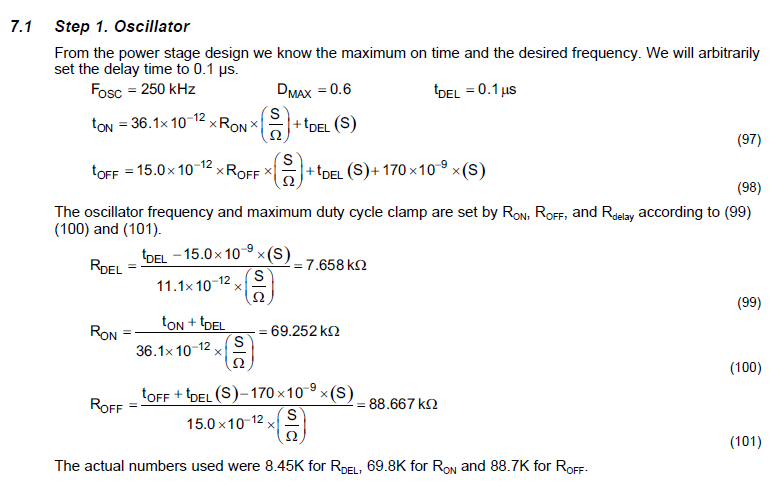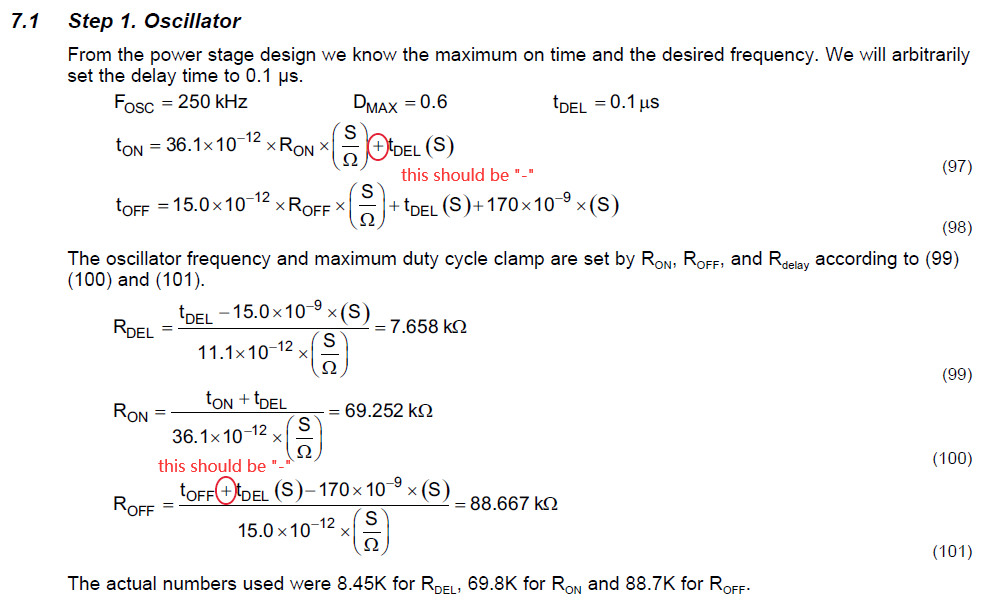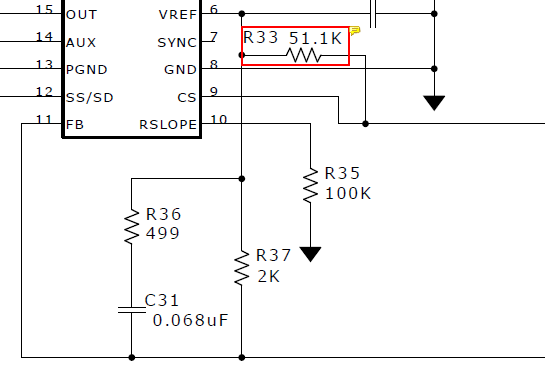Other Parts Discussed in Thread: TPS2379, , TPS23881, UCC2897A
Hi
1, I want to know, weather the PMP7499 reference design truely support a 12V@5A(60W) application ? I mean, under 60W load, the internal and external MOSFET may flow 1.1A (at 57V voltage) continuously. The TPS2379 will not shutdown due to thermal?
2, And there is also a question.
According from slua535, its assumed turn-on delay time is 0.1us; and the typical fsw is 250kHz. Therefore, the RON could be 69.8k, and ROFF could be 88.7k.
But in PMP7499, RON is R30=80.6k and ROFF is R31=61.9k.
Where are the two value caculated from?
What is the turn-on delay time in PMP7499 reference design?
And RON=69.8k, ROFF=88.7k also will be ok for this reference design?
http://www.ti.com/cn/lit/df/slvrb55/slvrb55.pdf
Thank you.







